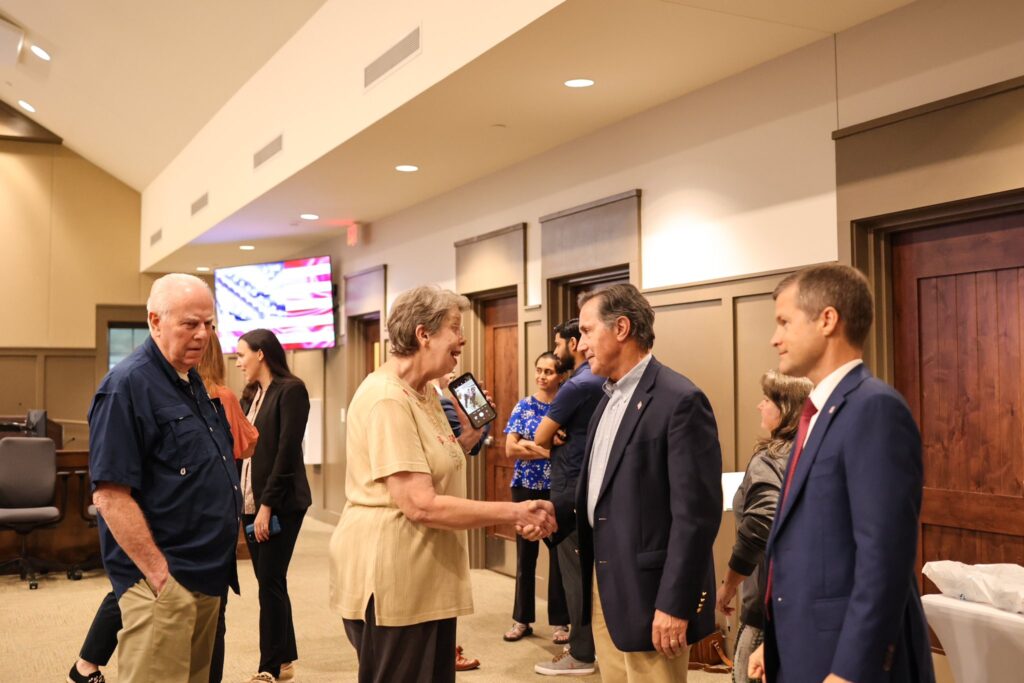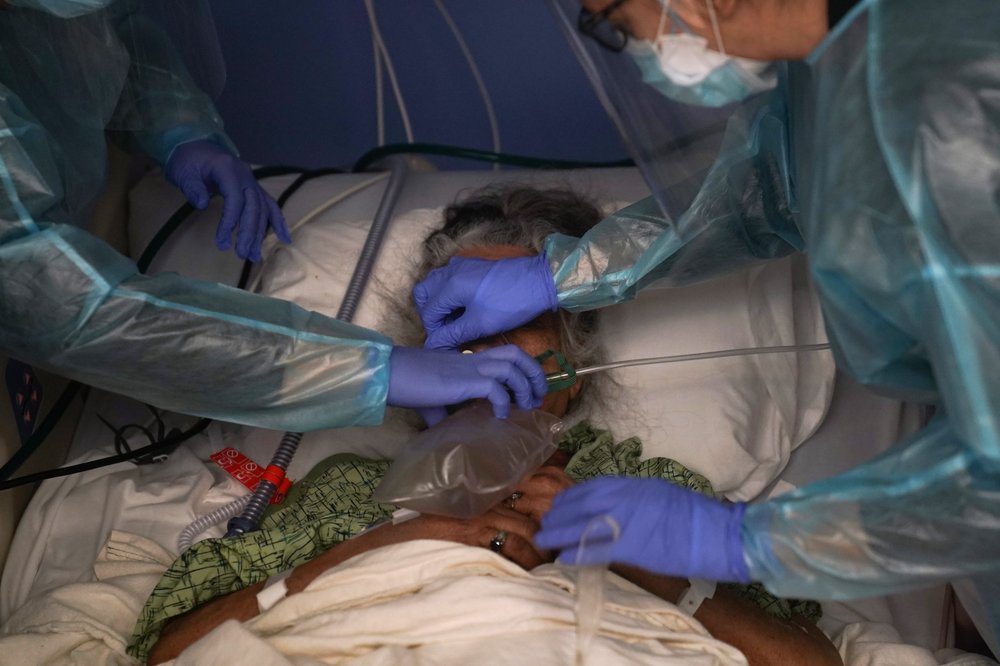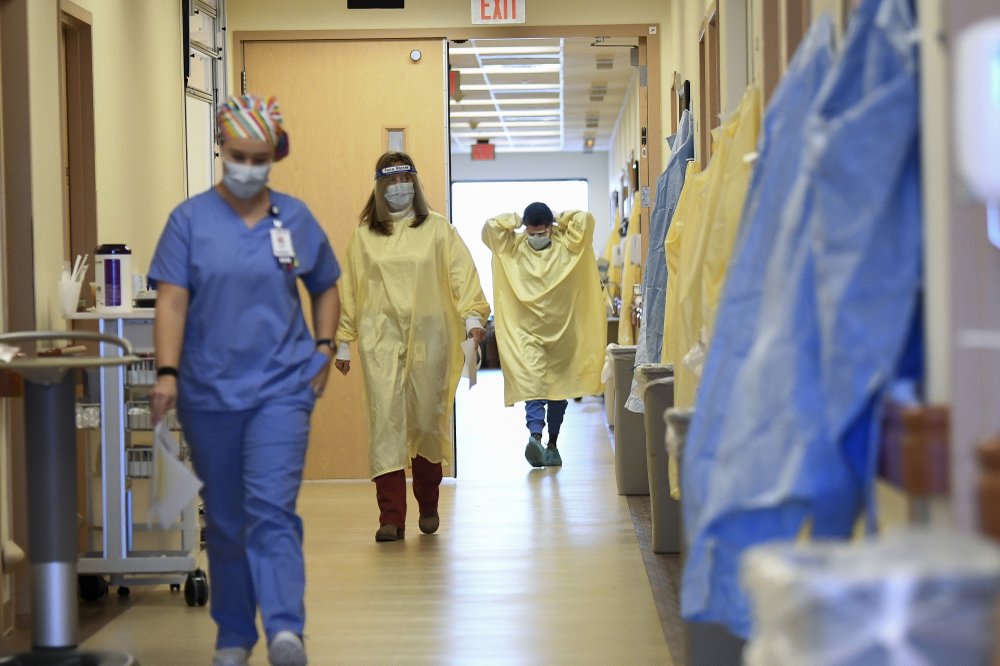Gary Palmer holds meet-and-greet town halls

Congressman Gary Palmer (R-AL06) was back home in the district this week. Palmer, his wife, Ann, and his staff hosted meet-and-greet format town halls with constituents in Alabaster on Monday and Trussville on Wednesday. Alabama Today caught up with Palmer on Wednesday in Trussville. Despite severe weather, approximately 80 people attended the Trussville Civic Center for the congressional town hall. “I was here Friday for the Prayer Breakfast, and it is still raining,” Palmer said. “Trussville is growing. I am really excited about the direction we are going.” Trussville Mayor Buddy Choat said, “Thanks for taking the time to come out and meet with us. Welcome back to you, your wife, and staff.” Palmer told the residents that construction would resume again on the long-delayed Northern Beltline. “It won’t be I-459 – I think it will be I-422,” Palmer said. “I think it will make a big difference.” “In just eight years, Birmingham has gone from the number one city in Alabama to number three,” Palmer continued. “I think that is because we have not been bringing in the companies like we should have.” Palmer said that it is important to attract companies and jobs for this area rather than them going to Charlotte or Dallas, “so you don’t have to fly to Dallas to meet the grandkids.” Palmer said that he brought his D.C. staff out to meet the people of the district because “they need to meet the people that they work for: you.” “Thank you for coming,” Palmer said. “We have the Washington staff as well as the district staff. I chair the Republic Policy Committee, so I also have the Committee staff.” “Ethan Vice is my District Director, while William Smith is my Chief of Staff,” Palmer said as he introduced the various members of his staff. “These are some of the absolute best people that I have ever worked with across the board. I am blessed to work with them.” Palmer said that if a constituent has a question about a veteran’s benefits issue, he has a staff person there who specializes in that and a staff person who specializes in IRS issues. Palmer made reference to the growing passport delay situation. Palmer said he has staff that specializes in passport issues. “We get about fifty of those calls a day.” The renewing, issuing, and replacing lost or stolen passports has become a major issue. The State Department is months behind on the work. If you are planning on international travel within the next ten to twelve months, apply for a passport or passport renewal as soon as possible due to the bureaucratic delays and new European security rules that will not allow American visitors whose passports will expire within the next three months. State Representative Danny Garrett (R-Trussville) was also there to chat with constituents. Palmer grew up on a small farm in Hackleburg in North Alabama. He attended the University of Alabama and played football for then-head football Coach Paul “Bear” Bryant. He co-founded the Alabama Policy Institute (API) with Tom Parker, which he headed for over 25 years. In 2014, when Congressman Spencer Bachus announced his retirement, Palmer entered the crowded Republican field to replace Bachus. Palmer and then State Representative Paul DeMarco advanced to the Republican primary runoff, where Palmer prevailed. Palmer advanced in the Republican leadership under then Speaker of the House Paul Ryan (R-Ohio) to head of the Republican Policy Committee. Palmer recently announced that he is seeking a sixth term representing Alabama’s Sixth Congressional District. CD-06 presently includes all or parts of Shelby, Jefferson, Blount, Bibb, and Chilton Counties. In the map that the Legislature passed three weeks ago, the district would lose Blount County but would pick up parts of Autauga and part of Elmore counties. That map, like the previous map, is currently being challenged in federal court by civil rights activists. The ongoing legal saga means that there is currently a great deal of uncertainty about what those congressional districts will actually look like in next year’s election. The major party primaries will be on March 5. To connect with the author of this story or to comment, email brandonmreporter@gmail.com.
2 in 5 Americans live where COVID-19 strains hospital ICUs

Straining to handle record numbers of COVID-19 patients, hundreds of the nation’s intensive care units are running out of space and supplies and competing to hire temporary traveling nurses at soaring rates. Many of the facilities are clustered in the South and West. An Associated Press analysis of federal hospital data shows that since November, the share of U.S. hospitals nearing the breaking point has doubled. More than 40% of Americans now live in areas running out of ICU space, with only 15% of beds still available. Intensive care units are the final defense for the sickest of the sick, patients who are nearly suffocating or facing organ failure. Nurses who work in the most stressed ICUs, changing IV bags and monitoring patients on breathing machines, are exhausted. “You can’t push great people forever. Right? I mean, it just isn’t possible,” said Houston Methodist CEO Dr. Marc Boom, who is among many hospital leaders hoping that the numbers of critically ill COVID-19 patients have begun to plateau. Worryingly, there’s an average of 20,000 new cases a day in Texas, which has the third-highest death count in the country and more than 13,000 people hospitalized with COVID-19-related symptoms. Full Coverage: Coronavirus pandemic According to data through Thursday from the COVID Tracking Project, hospitalizations are still high in the West and the South, with over 80,000 current COVID-19 hospital patients in those regions. The number of cases reported in the U.S. since the pandemic’s start surpassed 25 million on Sunday, according to Johns Hopkins University. Encouragingly, hospitalizations appear to have either plateaued or are trending downward across all regions. It’s unclear whether the easing will continue with more contagious versions of the virus arising and snags in the rollout of vaccines. In New Mexico, one surging hospital system brought in 300 temporary nurses from outside the state, at a cost of millions of dollars, to deal with overflowing ICU patients, who were treated in converted procedure rooms and surgery suites. “It’s been horrid,” said Dr. Jason Mitchell, chief medical officer for Presbyterian Healthcare Services in Albuquerque. He’s comforted that the hospital never activated its plan for rationing life-saving care, which would have required a triage team to rank patients with numerical scores based on who was least likely to survive. “It’s a relief that we never had to actually do it,” Mitchell said. “It sounds scary because it is scary.” In Los Angeles, Cedars-Sinai Medical Center ran into shortages of take-home oxygen tanks, which meant some patients who could otherwise go home were kept longer, taking up needed beds. But the biggest problem is competing with other hospitals for traveling nurses. “Initially, when the COVID surges were hitting one part of the country at a time, traveling nurses were able to go to areas more severely affected. Now with almost the entire country surging at the same time,” hospitals are paying twice and three times what they would normally pay for temporary, traveling nurses, said Dr. Jeff Smith, the hospital’s chief operating officer. Houston Methodist Hospital recently paid $8,000 retention bonuses to keep staff nurses from signing up with agencies that would send them to other hot spots. Pay for traveling nurses can reach $6,000 per week, an enticement that can benefit a nurse but can seem like poaching to the hospital executives who watch nurses leave. “There’s a lot of these agencies that are out there charging absolutely ridiculous sums of money to get ICU nurses in,” Boom said. “They go to California, which is in the midst of a surge, but they poach some ICU nurses there, send them to Texas, where they charge inordinate amounts to fill in gaps in Texas, many of which are created because nurses in Texas went to Florida or back to California.” Space is another problem. Augusta University Medical Center in Augusta, Georgia, is treating adult ICU patients, under age 30, in the children’s hospital. Recovery rooms now have ICU patients, and, if things get worse, other areas — operating rooms and endoscopy centers — will be the next areas converted for critical care. To prevent rural hospitals from sending more patients to Augusta, the hospital is using telemedicine to help manage those patients for as long as possible in their local hospitals. “It is a model I believe will not only survive the pandemic but will flourish post-pandemic,” said Dr. Phillip Coule, the Augusta hospital’s chief medical officer. Hospitals are pleading with their communities to wear masks and limit gatherings. “There just hasn’t been a lot of respect for the illness, which is disappointing,” said Dr. William Smith, chief medical officer for Cullman Regional Medical Center in Cullman, Alabama. He sees that changing now with more people personally knowing someone who has died. “It has taken a lot of people,” he said of the virus, adding that the death toll — 144 people in six months in a county of 84,000 — “has opened their eyes to the randomness of this.” The Alabama hospital’s ICU has been overflowing for six weeks, with 16 virus patients on ventilators in a hospital that a year ago had only 10 of the breathing machines. “You can see the stress in people’s faces and in their body language. It’s just a lot for people to carry around,” Smith said. “Just the fatigue of our staff can affect quality of care. I’ve been encouraged we’ve been able to keep the quality of care high,” Smith said. “You feel like you are in a very precarious situation where errors could occur, but thankfully we’ve managed to stay on top of things.” Hospitals say they are upholding high standards for patient care, but experts say surges compromise many normal medical practices. Overwhelmed hospitals might be forced to mobilize makeshift ICUs and staff them with personnel without any experience in critical care. They might run out of sedatives, antibiotics, IVs, or other supplies they rely on to keep patients calm and comfortable while on ventilators. “It’s really daunting and mentally taxing.
‘Like a bathtub filling up’: Alabama is slammed by the virus

With its dozen intensive care beds already full, Cullman Regional Medical Center began looking desperately for options as more and more COVID-19 patients showed up. Ten beds normally used for less severe cases were transformed into intensive care rooms, with extra IV machines brought in. Video monitors were set up to enable the staff to keep watch over patients whenever a nurse had to scurry away to care for someone else. The patch did the job — for the time being, at least. “We’re kind of like a bathtub that’s filling up with water and the drain is blocked,” the hospital’s chief medical officer, Dr. William Smith, said last week. Alabama, long one of the unhealthiest and most impoverished states in America, has emerged as one of the nation’s most alarming coronavirus hot spots. Its hospitals are in crisis as the virus rages out of control in a region with high rates of obesity, high blood pressure, and other conditions that can make COVID-19 even more dangerous, where access to health care was limited even before the outbreak, and where public resistance to masks and other precautions is stubborn. In another sign of how readily the virus can spread, the first reported U.S. case of the COVID-19 variant that’s been seen in the United Kingdom has been discovered in Colorado. The variant was found in a man in his 20s who is in isolation southeast of Denver and has no travel history, state health officials said Tuesday. Scientists in the U.K. believe the new variant is more contagious than previously identified strains. In all, the coronavirus has killed more than 335,000 people across the U.S., including over 4,700 in Alabama. Places such as California and Tennessee have also been hit especially hard in recent weeks. At Cullman Regional, a midsize hospital that serves an agricultural area 55 miles north of Birmingham, the intensive care unit as of last week was at 180% of capacity, the highest in the state. Other hospitals are also struggling to keep up with the crush of people sickened by the virus. While a typical patient might need ICU treatment for two or three days, Smith said, COVID-19 patients often stay two or three weeks, causing the caseload to build up. Alabama ranked sixth on the list of states with the most new cases per capita over the past week, according to Johns Hopkins University. Alabama’s latest average positivity rate — the percentage of tests coming back positive for the virus — is almost 40%, one of the highest figures in the country. And the state is seeing an average of 46 deaths per day, up from 30 on Dec. 14. While ICUs nationwide were at 78% capacity during the week of Dec. 18-24, Alabama’s were 91% full, according to the U.S. Health and Human Services Department. As of last week, 15 Alabama hospitals had intensive care units that were at or above capacity, and the ICUs at six more hospitals were at least 96% full. On Tuesday, 2,804 people were in Alabama hospitals with COVID-19, the highest total since the pandemic began. Experts worry the strain will only increase after the holidays because of new infections linked to travel and gatherings of family and friends. “I think we are in dire shape. I really do,” said Dr. Don Williamson, head of the Alabama Hospital Association. “I fear our Christmas surge is going to be much worse than the Thanksgiving surge.” Alabama Gov. Kay Ivey, breaking at the time with some of her Southern counterparts, imposed a statewide mask mandate that has been in place since July, but health officials have struggled to get people to comply. The Republican governor also issued a stay-at-home order early in the pandemic but has staunchly opposed doing so again, saying, “You can’t have a life without a livelihood.” California, in contrast, has issued strict stay-at-home orders in recent weeks in areas where ICU occupancy has reached 85%. “We have, unfortunately, people who are still getting together in groups, traveling for the holidays, doing things that are unsafe,” said Dr. Scott Harris, Alabama’s state health officer. The Deep South state has some of the highest rates of certain chronic health conditions that increase the risk of death or serious illness from the coronavirus. Alabama has the sixth-highest rate of adult obesity in the U.S. and ranks third in the percentage of adults who have diabetes. Alabama is also one of a dozen states that did not expand Medicaid under the Affordable Care Act and thus has large numbers of uninsured. About 15% of people ages 19 to 64 have no coverage, the 13th-highest percentage in the nation, according to the Henry J. Kaiser Family Foundation. The state has seen the closing of 17 hospitals, mostly small rural ones, in the last decade, a trend that left regional facilities to pick up the slack. At Decatur Morgan Hospital, COVID-19 deaths have tripled since September and the intensive care unit is full, said Dr. James Boyle. The pulmonologist struggled to maintain his composure, pausing and pursing his lips, as he discussed the possibility of having to ration care in the new year. “I’ve been practicing in this county since ’98. I’ve never had more than two or three people on ventilators with the flu in the last 20 years,” he said. “We always have a lot of patients in the ICU in the wintertime. To have 16 patients on ventilators with an illness that we don’t usually have is unprecedented.” UAB Hospital, which is affiliated with the University of Alabama at Birmingham, has brought in retired nurses and dozens of teachers and students from its nursing school to help. Hospitals in Alabama are getting calls from neighboring states such as Mississippi and Tennessee as doctors seek extra space for COVID-19 patients, but they are not able to help as often as they did in the past. The same is true within the state, with hospitals that might help care for patients


